
The Business of Fashion
Agenda-setting intelligence, analysis and advice for the global fashion community.

Agenda-setting intelligence, analysis and advice for the global fashion community.
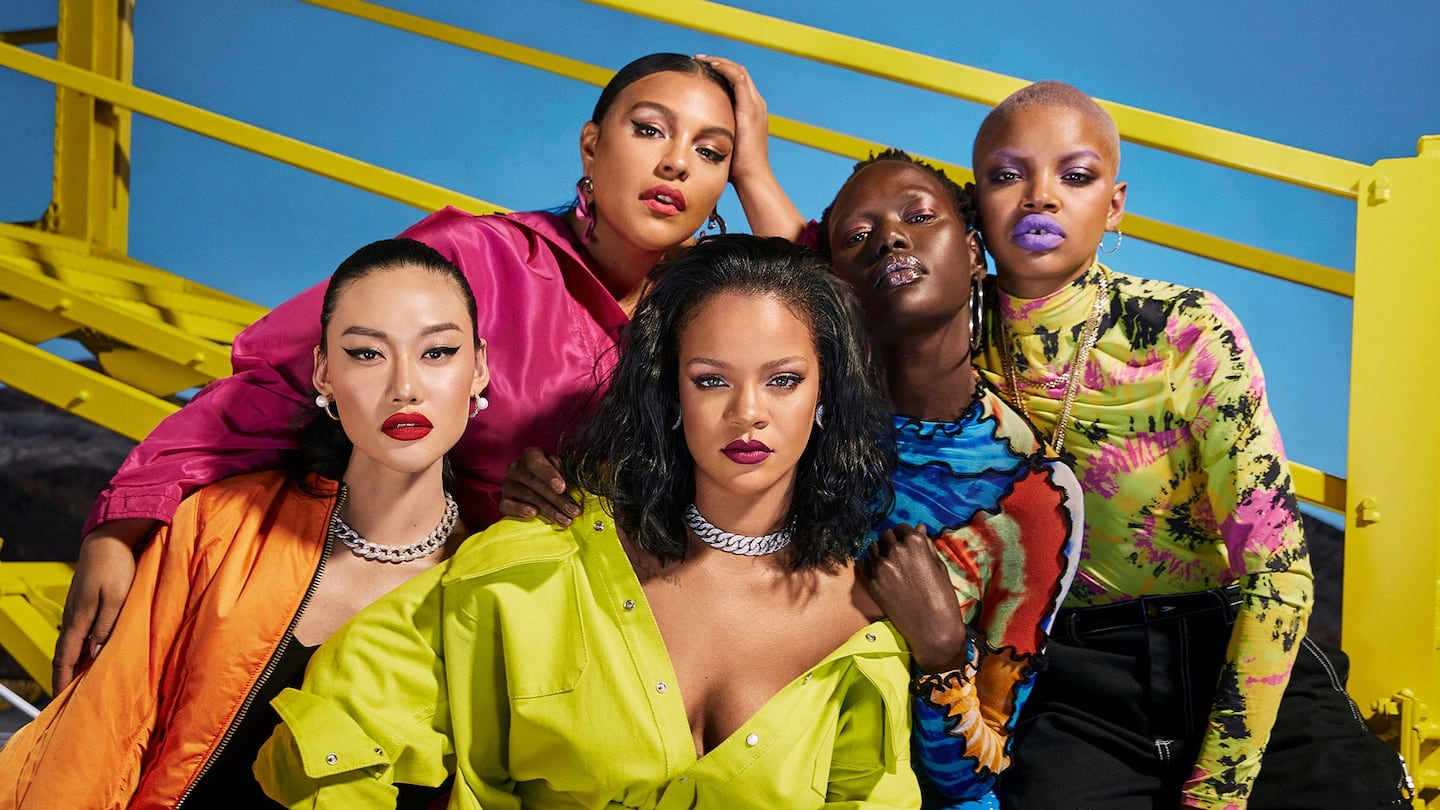
Shanghai, CHINA — After months of 'will they, won't they' speculation surrounding Fenty Beauty's potential entry into the Chinese market, Rihanna's hit beauty brand officially made its foray on September 3 via Alibaba's Tmall Global cross-border e-commerce platform.
This is great news for mainland consumers, who had already made the cult favourite’s inclusive foundation shades and shimmery highlighters most-wanted items on social media.
But the question remains whether nominally cruelty-free beauty brands such as Fenty Beauty can still boast the label as they begin selling in a market that legally requires animal testing for international brands. When that market is worth $57 billion, there is a lot at stake.
Cruelty-free beauty brands must navigate controversial Chinese legislation and their hard-won global reputations, which seem to be at odds with one another. Yet brands can’t afford to get either wrong. Fenty Beauty declined to comment for this story.
ADVERTISEMENT
A Two-Tiered System
In recent years, the momentum for change — while stuttering — has been moving towards a lessening or eventual ending of compulsory animal testing on beauty products in China. But the market is not quite there yet.
In 2015, mandatory animal testing for domestic Chinese brands selling locally was scrapped, as long as goods were designated for “non-special use” (special-use designation includes sunscreens and whitening products). A two-tiered system was born, whereby international brands importing products to China are still required to use animal testing, whether designated for “special use” or not.
For some countries, their safety controls are not significant and there have been reports of cases of cosmetics with terrible side effects.
Though there have been complaints about this system being weighted unfairly in favour of domestic brands, there are wider health and safety concerns at play, according to Mette Knudsen, the Shanghai-based chief executive of certification and regulatory compliance specialists Knudsen & CRC.
“Most people think about imported cosmetics as European cosmetics, or cosmetics from Australia; of course they are safe and there is nothing wrong with them, but these are not the only places that are importing cosmetic products into China,” Knudsen explains.
“[For] some countries, their safety controls are not significant [and] there have been reports of cases of cosmetics with terrible side effects.” The argument being that, without this regulation, unscrupulous players from abroad could endanger China’s consumer public with low quality, unsafe products.
Despite regulators’ reticence, progress continues to be made. China’s National Institute for Food and Drug Control (NIFDC) is working with the US non-profit, Institute for In Vitro Sciences (IIVS), to implement non-animal testing methods for cosmetics regulation.
According to IIVS President Erin Hill, making new methods available in local laboratories before accepting them for regulatory purposes will “build confidence in the new methods and [ensure] proficient testing [capabilities].”
ADVERTISEMENT
Meanwhile, Chinese law also allows for non-mandatory post-market consumer testing, including animal testing, for local governments looking to double-check the safety of products for sale within their jurisdiction. Several municipalities and provinces have vowed not to use post-market testing on animals in recent years, but this doesn’t help brands who want to sell products nationwide. Most brands don’t want to limit their distribution to specific provinces.
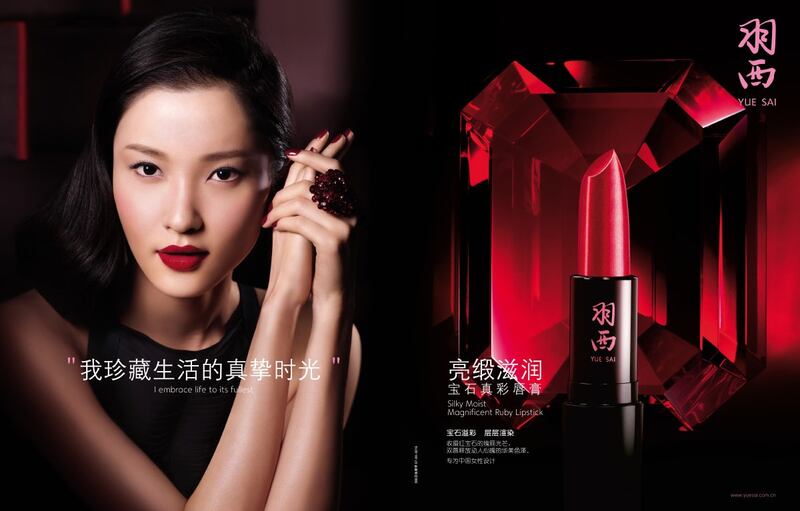
A campaign image from L'Oréal-owned brand Yue Sai featuring supermodel Du Juan | Source: Corutesy
Cruelty-Free-ish
Just as there are two tiers of animal testing legislation for domestic and international beauty brands selling in the China market, there now exists two tiers of cruelty-free brands globally: those that are 100 percent cruelty-free, and those that are cruelty free except for China.
In the latter camp, the likes of L’Oréal, Estée Lauder, MAC and Benefit have added caveats to their cruelty-free status to the effect of: “not tested on animals unless required by law.” BoF reached out to these brands for comment but none responded in time for publication.
Though this has drawn serious criticism from animal lovers in the West, beauty companies have been working to advance non-animal testing technologies and push a global cruelty-free agenda. L’Oréal, for example, says it spent $1 billion in past 25 years to develop cruelty-free testing methods.
For most brands, China is just too lucrative an opportunity to pass up, no matter the ethical compromise. In 2017, Nars, a long-time cruelty-free beauty staple, buckled and entered the Chinese market, in order to get their slice of the colossal and fast-growing market.
Backlash, most visibly on Instagram (outside China), ensued. Nars then went on the defensive, releasing a statement that read in part: “We firmly believe that product and ingredient safety can be proven by non-animal methods, but we must comply with the local laws of the markets in which we operate, including in China.”
ADVERTISEMENT
https://www.instagram.com/p/BV2Qf8MjIi3/?utm_source=ig_embed
The list of hold-outs who won't compromise their cruelty-free stance by selling in China include brands owned by Brazilian beauty conglomerate Natura & Co., notably The Body Shop, which has long explored different ways of entering the market, but finally pulled their products from local airport retailers in 2014 when unable to secure a guarantee they wouldn't be tested on animals under post-market testing regulations. Natura & Co. declined to comment for this story.
A Loophole for Every Law
Some brands have gone to great lengths to evade animal testing regulations, while continuing to sell to China.
One option brands such as Dove, Herbal Essences and Canadian beauty brand Nudestix have opted for is to manufacture their products in China, putting them in the category of domestically-produced non-special use cosmetics which don’t require animal testing.
However, selling nationwide in physical stores still means these brands are vulnerable to potential post-market testing. One way to bypass this appears to be to turn to China’s cross-border e-commerce sector, which last year saw turnover hit 9 trillion yuan ($1.3 trillion).
Cross-border e-commerce provides a loophole for a host of cruelty-free international brands looking to sell to Chinese consumers keen to access foreign brands.
Cross-border sellers are not required to register [with authorities] before listing, so they do not need to do animal testing.
Fenty Beauty, Drunk Elephant, Charlotte Tilbury, Miranda Kerr's Kora Organics, 100% Pure and The Ordinary are all stocked on Tmall Global, Alibaba's cross-border e-commerce channel. Drunk Elephant's Chief Executive Tim Warner said overtly that the move conforms to the brand's cruelty-free positioning; Fenty Beauty has not made a statement to the same effect, but the brand's decision to sell in-store in Hong Kong and other hot spots in the region implies that the company has chosen the cross-border route in China to avoid animal testing until the regulation is changed.
Thanks to a special type of customs clearance regulation, cross-border e-commerce platforms such as Tmall Global, Xiaohongshu and JD Worldwide allow brands to ship products from abroad — including their home countries, Hong Kong or even bonded warehouses within China’s free trade zones — directly to China.
Platforms claim that, because brand clients are selling from international markets and therefore don’t need to register to import their products into the Chinese market like brick-and-mortar entrants, brands can avoid Beijing’s regulations.
“Cross-border sellers are not required to register [with authorities] before listing, so they do not need to do animal testing,” says April Guo, general manager of the personal care division of China’s Chemical Inspection and Regulation Service (CIRS).

The CFI Leaping Bunny logo | Source: CFI
Not everyone agrees that cross-border e-commerce is a fool-proof way to skirt local requirements. Cruelty Free International (CFI), for example, has issued guidance to brands looking to be certified with its “Leaping Bunny” logo (one of the gold-standard cruelty-free certifications) that it will only accept brands selling to China using cross-border with strict caveats, including warehousing products outside mainland China, and having a commitment from partner platforms to quickly remove products from sale (for example, if customers began having adverse reactions to their products) before authorities move in to do any animal testing.
According to Mette Knudsen, the CFI’s approach is about being beyond reproach. “If Leaping Bunny wants to retain being gold-standard for cruelty-free cosmetics, all it would take is for one single product to be tested by the authorities as part of a pre-market test for cross-border e-commerce and then the whole thing falls apart,” she said.
Possible Does Not Mean Easy
This is part of the reason CFI and Knudsen & CRC have been working with local authorities in Shanghai on a pilot programme that gets companies both Leaping Bunny-certified and selling offline in the Chinese market.
At their first Chinese brick-and-mortar outpost in Shanghai, global brand Brighter Beauty sell their facial masks — the first international beauty products sold in China to carry CFI’s Leaping Bunny logo.
They are one of the first graduates of a pilot programme run by CFI and overseen by Knudsen & CRC in conjunction with the Fengxian Beauty Zone (a major beauty manufacturing hub just outside of Shanghai) and municipal authorities, who have assured CFI that animal testing is not part of the post-market testing process in Shanghai.
This entails that as long as the products were sold only in Shanghai, they would not be subject to animal testing.
We need the local industry to drive the change.
Though Brighter Beauty Chief Executive Jessica Gleeson said the launch process was “rigorous,” the new brand had the advantage of creating products that were Leaping Bunny-compliant from the get-go. Not only the formulations, but also all raw ingredients, were demonstrably cruelty-free.
“In China, everything is possible, but nothing is easy. There’s a lot of paperwork and documentation,” says Gleeson, adding that the process took a total of nine months from starting the pilot application process to gaining their certification in May.
To qualify for the CFI program, the likes of Brighter Beauty need to manufacture their products locally within the Fengxian manufacturing zone, provide extensive proof that their sources are also cruelty-free and only sell via physical stores within the Shanghai municipality (because local authorities have agreed not to do post market testing). Brands also need to take steps annually to re-certify.
Though the pilot programme hasn’t yet spawned purely domestic cruelty-free brands, Knudsen reckons the benefit for major Chinese brands that earn the designation (and therefore the right to sell in Europe and, soon, parts of the US, where products tested on animals are banned) lies in providing impetus for change.
“We need the local industry to drive the change… if the local cosmetic brands are not part of this, we won’t see it change,” she says. “If they say, ‘we can’t sell in Europe or in the US because we are testing on animals,' that will make a change in the regulations in China.”
Hope on the Horizon
Like the brands themselves, Chinese shoppers are beginning to pay more attention to the designation, though other considerations — including efficacy, price, and even natural and organic ingredients — remain top priorities for local beauty consumers.
Those who do prioritise cruelty-free beauty tend to be an increasingly international population of young people who have encountered the philosophy overseas. Take Betty Cui, 24, who recently moved back to Shanghai after studying in the US.
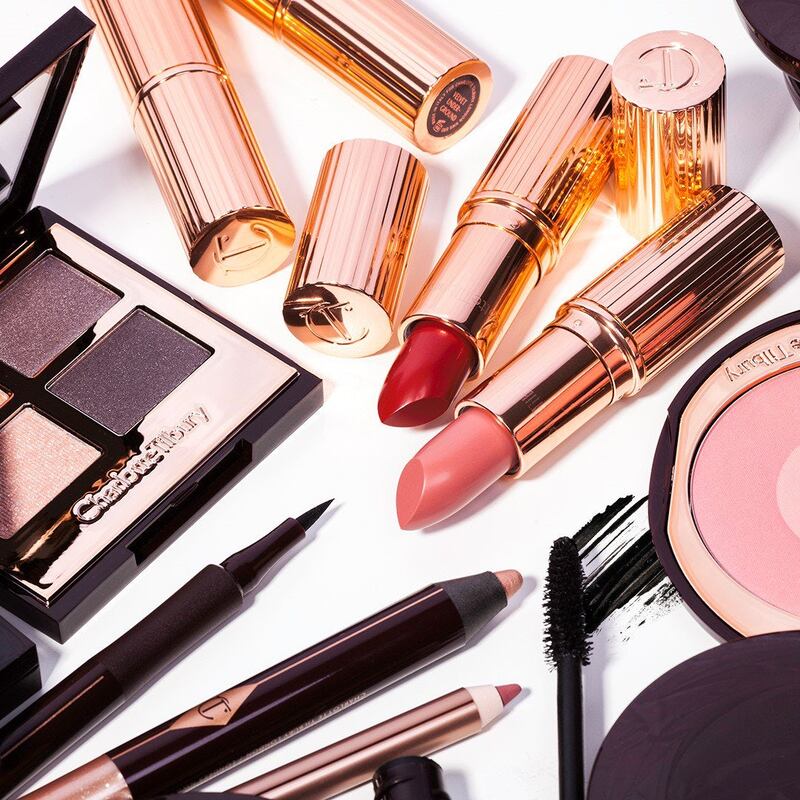
Charlotte Tilbury products | Source: Charlotte Tilbury
“When it comes to beauty products that are friendly to the environment or animals, I’m not sure most people will care what is going into making the product,” she explained.
“[But] for me, I feel like it’s hard to like a brand that will test on animals.”
It’s this shift that Brighter Beauty’s Gleeson finds particularly encouraging, though she says their efforts to remain cruelty-free would continue whether or not consumers demanded it.
“There’s going to be a learning process with the Chinese consumer, but I think one of the big shifts in the last five years is that I really see my customer base is looking more for affinity brands, they want brands that reflect their core values,” she said.
Draft legislation is currently being reviewed by Chinese authorities to end mandatory animal tests for imported beauty products designated for non-special use, levelling the playing field between local and foreign brands. While the timeline for this legislation remains uncertain, Knudsen believes the mandatory requirement will be a thing of the past by spring 2020.
“We are getting close and that will change the whole scenario. If this happens, and it means imported cosmetics will not require animal testing, that will be a day of celebration.”
Editor's Note: This article was revised on September 6, 2019. An earlier version of this article misstated that Cruelty Free International (CFI) won't accept brands selling to China using cross-border means. Moving forward, CFI will now allow brands to do so with strict caveats.
时尚与美容 FASHION & BEAUTY
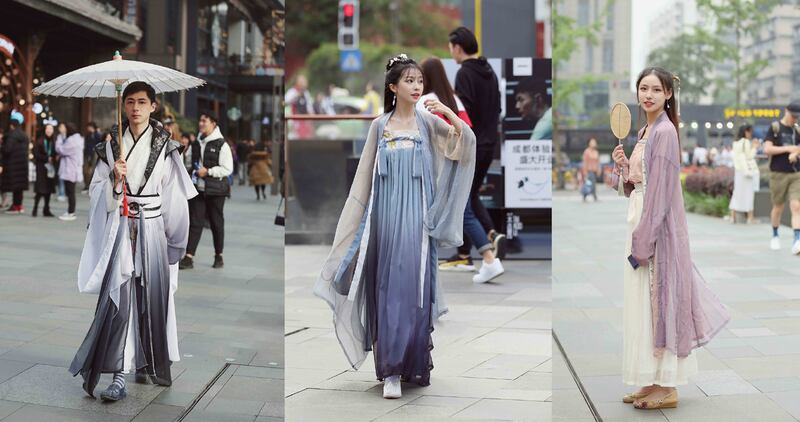
Hanfu streetstyle shot by Weibo user @她街拍 | Source: Weibo @她街拍
Trend for Traditional ‘Hanfu’ Clothing Gains Steam
In recent years, the number of Chinese fashion consumers — many of them young people — seeking out traditional Chinese clothing items has ballooned to more than 2 million according to a new report, which estimates last year's sales revenue from Hanfu clothing at just over a billion yuan (around $140 million). E-commerce sales figures show 146 percent year-on-year growth in Hanfu sales online, though 60 percent of those sales are low priced garments worn as costumes or for special occasions, between 100 and 300 yuan ($14 to $42). There is also a growing opportunity for high-end Hanfu design: as young fans grow their disposable income, they will seek craftsmanship that more closely aligns with the subculture's traditional ethos. (Fuzhuang Xinwen)
In China, Artists Try Their Hand at Fashion Design
Fashion brands have long collaborated with artists, and, internationally contemporary artists such as Sterling Ruby have crossed over from collaborator (famously with Raf Simons) to designer. This trend is even more pronounced in China, where a generation of creatives — coming of age in a country obsessed with fashion and design — sees fashion as an opportunity to commercialise their creativity. Artists, such as Song Tuo of Songta and Chen Tianzhuo of Asian Dope Boys, have started their own fashion brands as both an outlet for their creativity and a way of bringing their artistic expression to a wider audience. (BoF China)
Lessons in KOL Marketing from a Cult Beauty Favourite
Hedone is a Chinese beauty brand enjoying significance buzz on local social media platforms Xiaohongshu and Weibo. The colour cosmetics brand, which launched in 2016, is known for its playful makeup collections and its cheeky packaging. According to Hedone's Head of Growth Marketing Claire Xu, the brand prioritises quality over quantity in its KOL marketing strategy, focusing more on engagement markers than total follower numbers and continuously scouring for rising stars in the influence world. Their multi-faceted strategy takes into account user behaviour on different platforms, as well as the differing nature of their own marketing needs for product launches, or existing product seeding. (ParkLu)
科技与创新 TECH & INNOVATION

Weibo's Oasis Interface | Source: Weibo
The Rise and Fall of Weibo's New Instagram Dupe
Chinese microblogging platform Weibo this week launched the test version of a new lifestyle platform, Oasis, that combines social media and forum functionalities. The new app is thought to be a tool to help Weibo fight off competition from fast-rising, though recently embattled Xiaohongshu: users can browse content based on interests and find like-minded friends in various fields such as fashion, food, travel, and beauty. But the firm's launch was cut short, when netizens alleged that elements of Oasis' design plagiarised graphics created by South Korean design studio Studio Fnt in 2015 for the country's Ulju Mountain Film Festival, and Weibo Chief Executive Wang Gaofei confirmed that the app had been removed from local app stores soon after. Oasis then released a statement on Weibo confirming the removal, and that investigations are underway. (Technode, The Beijing News)
Chinese ‘Deepfake’ App Raises Privacy Concerns
Zao, a newly-released face-swapping app drew the ire of Chinese netizens due to a clause in its terms and conditions allowing it to sell users photos and videos, with many calling for the app to be removed from the marketplace. The app works by digitally grafting the faces of its users (who upload their own image for use on the platform) onto the bodies of celebrities in scenes from movies, TV shows and music videos, making them virtual 'stars.' Each video takes less than 10 seconds to generate, with enhanced quality if users agree to let their phone's camera film their face from various angles, and while blinking their eyes or opening their mouths. Since its release Friday, Zao has rocketed up the charts to become the second most widely downloaded free app on Apple's local app store as of Monday evening. (SixthTone)
Secoo and Bytedance Ink Wide-Ranging Business Deal
Luxury e-commerce platform Secoo and social media upstart Bytedance have revealed plans to collaborate on smart shopping technologies that will eventually allow shoppers to easily click directly from Bytedance platforms to shop through Secoo. This means someone watching a short video on Bytedance's Douyin (known internationally as TikTok) could spot a desired product in the video and click through to buy on Secoo, for example. A release from the companies said their co-operation will cover precision marketing, in-depth technical access, high-end brand advertising, and high-end consumer data insight reports. For two up-and-coming companies butting heads with China's biggest tech titans Alibaba and Tencent to join forces could prove a savvy move. (TMT Post)
消费与零售 CONSUMER & RETAIL
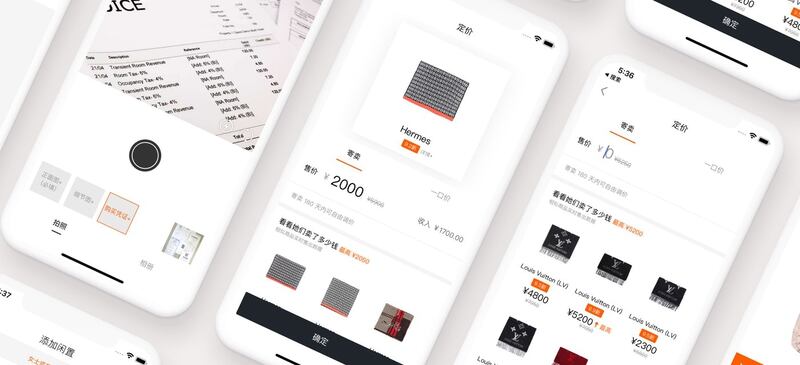
China's second-hand e-commerce app 只二 (Go Share 2) | Source: 只二
Chinese Consumers Are Ready for Second-Hand Luxury
Years of exploding consumer culture, combined with an increasing awareness of sustainability among China's younger consumers, is helping drive a second-hand market for everything from household goods, to luxury fashion and beauty that didn't exist at all before 2016. Fashion lovers in China's major cities are beginning to turn their out-of-season pieces into money-makers on second-hand fashion apps, largely in order to help fund new luxury purchases. Though the desire for newness remains profound across the Chinese market, the antipathy towards the second-hand market is nowhere near as profound as it once was. (BoF China)
Chinese Consumers Prove Slow to Forgive Following T-Shirt Controversy
A study reveals that the reputation of several luxury fashion houses has tanked in China in the month following a series of PR disasters caused by T-shirts which didn't adhere to the official 'One-China' policy by listing Taiwan, Hong Kong and Macau as separate countries. YouGov measurements of luxury brand impressions show that prior to this controversy, Givenchy held a score of +27.2, but today stands at +4.0 — a drop of 23.2 points. Coach, which had a score of +9.3, fell 9.5 points to a score of -0.2. It seems apologies aren't enough to get Chinese consumers to forgive and forget. (Marketing Interactive)
Hong Kong Retail Takes Another Plunge in July
The city's retail sales in July plunged by 11.4 percent as ongoing protests and the China-US trade war took their toll. The fall was widely expected, with several large retailers projecting double-digit declines based on their own internal monitoring during the month. A government spokesman said retail sales in the region were expected to remain weak in the near term, with no end to ongoing civil unrest or the China, US trade conflict in sight. July's decrease followed a 6.7 percent decline in June when the current round of protests commenced. For the first seven months of the year, sales are down by 3.8 percent year-on-year. (Inside Retail Asia)
政治,经济与社会 POLITICS, ECONOMY, SOCIETY
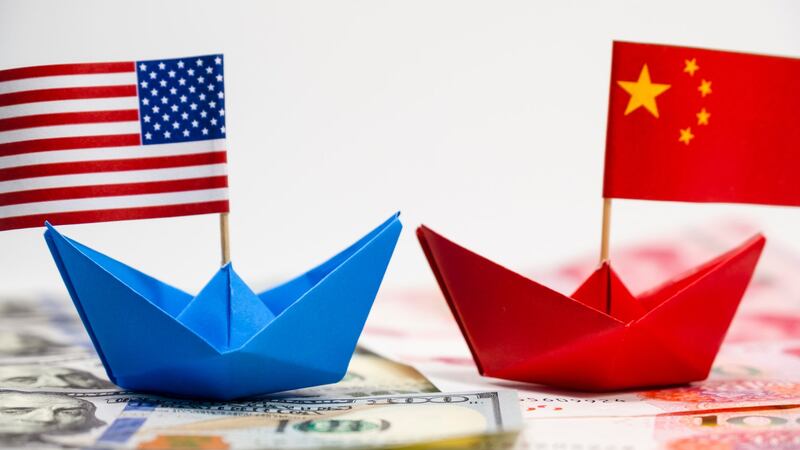
US-China relations heat up | Source: Shutterstock
Latest Round of Trade War Tariffs Kick In
The United States began imposing 15 percent tariffs on a variety of Chinese goods on September 1 — including footwear and smart watches — as China began imposing new duties on US crude, the latest escalation in a seemingly intractable trade war. US President Donald Trump said the sides would still meet for talks later this month in Washington, but time is short between now and major events commemorating the 70th anniversary of the founding of the People's Republic of China, to be celebrated on October 1, making it unlikely any meaningful progress will be made this month. (Reuters)
Elon Musk and Jack Ma Debate AI
China's tech titans, including Jack Ma and Tencent's Pony Ma, descended on Shanghai late last week for the World AI Conference — an event showcasing China's latest artificial intelligence innovations. The most anticipated session of the conference saw Alibaba founder Ma in conversation with Tesla and SpaceX founder Elon Musk about the pros and cons of artificial intelligence. In a meandering, unmoderated session, the two respectfully disagreed in the relative negativity of the future for humans in a world increasingly dominated by machines, with Musk unequivocally arguing that human kind will struggle to find meaningful employment and Ma taking a more positive view of the advantages AI might bring people. (Bloomberg)
Survey Confirms US Companies Wish to Stay in China
A new survey from the US-China Business Council reinforces that recent rhetoric is out of step with the on-the-ground reality of companies doing business in the mainland. Data reveals that 87 percent of American companies do not plan to leave China, and those who have moved or plan to move operations are three times more likely to move to a third country rather than back to the US. Respondents reported healthy profit margins for their mainland operations, compared with overall operations and unanimously said that intellectual property protection had either stayed the same or improved, though they also overwhelmingly had concerns about the enforcement of intellectual property protections. (SupChina)
China Decoded wants to hear from you. Send tips, suggestions, complaints and compliments to our Shanghai-based Asia Correspondent casey.hall@businessoffashion.com.
With consumers tightening their belts in China, the battle between global fast fashion brands and local high street giants has intensified.
Investors are bracing for a steep slowdown in luxury sales when luxury companies report their first quarter results, reflecting lacklustre Chinese demand.
The French beauty giant’s two latest deals are part of a wider M&A push by global players to capture a larger slice of the China market, targeting buzzy high-end brands that offer products with distinctive Chinese elements.
Post-Covid spend by US tourists in Europe has surged past 2019 levels. Chinese travellers, by contrast, have largely favoured domestic and regional destinations like Hong Kong, Singapore and Japan.